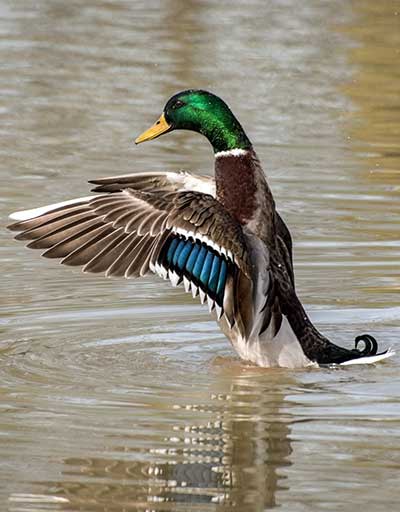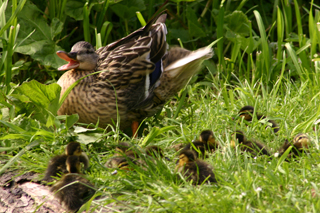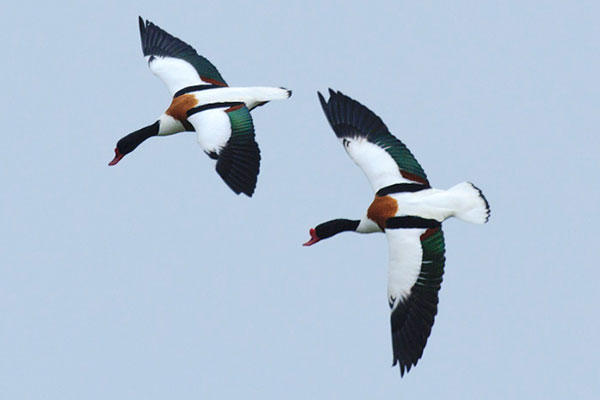[et_pb_section bb_built=”1″ fullwidth=”off” specialty=”off” next_background_color=”#000000″ inner_width=”90%” inner_max_width=”1086px”][et_pb_row _builder_version=”3.17.6″ custom_margin=”0px|||” custom_padding=”0px|||” width=”90%” max_width=”1086px”][et_pb_column type=”4_4″ custom_padding__hover=”|||” custom_padding=”|||”][et_pb_post_title _builder_version=”3.27.3″ comments=”off” featured_image=”off” custom_margin=”0px|||” custom_padding=”0px|||” author=”off” text_shadow_horizontal_length=”text_shadow_style,%91object Object%93″ text_shadow_horizontal_length_tablet=”0px” text_shadow_vertical_length=”text_shadow_style,%91object Object%93″ text_shadow_vertical_length_tablet=”0px” text_shadow_blur_strength=”text_shadow_style,%91object Object%93″ text_shadow_blur_strength_tablet=”1px” title_text_shadow_horizontal_length=”title_text_shadow_style,%91object Object%93″ title_text_shadow_horizontal_length_tablet=”0px” title_text_shadow_vertical_length=”title_text_shadow_style,%91object Object%93″ title_text_shadow_vertical_length_tablet=”0px” title_text_shadow_blur_strength=”title_text_shadow_style,%91object Object%93″ title_text_shadow_blur_strength_tablet=”1px” meta_text_shadow_horizontal_length=”meta_text_shadow_style,%91object Object%93″ meta_text_shadow_horizontal_length_tablet=”0px” meta_text_shadow_vertical_length=”meta_text_shadow_style,%91object Object%93″ meta_text_shadow_vertical_length_tablet=”0px” meta_text_shadow_blur_strength=”meta_text_shadow_style,%91object Object%93″ meta_text_shadow_blur_strength_tablet=”1px” box_shadow_horizontal_tablet=”0px” box_shadow_vertical_tablet=”0px” box_shadow_blur_tablet=”40px” box_shadow_spread_tablet=”0px” z_index_tablet=”500″ /][/et_pb_column][/et_pb_row][/et_pb_section][et_pb_section bb_built=”1″ fullwidth=”on” specialty=”off” prev_background_color=”#000000″ next_background_color=”#000000″ inner_width=”90%” inner_max_width=”1086px”][et_pb_fullwidth_image _builder_version=”3.27.3″ src=”https://0ld.basc.org.uk/wp-content/uploads/2019/09/duck-2824378_1920.jpg” box_shadow_horizontal_tablet=”0px” box_shadow_vertical_tablet=”0px” box_shadow_blur_tablet=”40px” box_shadow_spread_tablet=”0px” z_index_tablet=”500″ /][/et_pb_section][et_pb_section bb_built=”1″ fullwidth=”off” specialty=”off” prev_background_color=”#000000″ inner_width=”90%” inner_max_width=”1086px”][et_pb_row _builder_version=”3.12.1″ custom_margin=”0px|||” custom_padding=”0px|||” background_position=”top_left” background_repeat=”repeat” background_size=”initial” width=”90%” max_width=”1086px”][et_pb_column type=”3_4″ custom_padding__hover=”|||” custom_padding=”|||”][et_pb_team_member _builder_version=”3.27.3″ name=”Matt Ellis” position=”BASC head of science” image_url=”https://0ld.basc.org.uk/wp-content/uploads/2019/08/MjMxMDQ-1.jpg-s-1.jpg” background_color=”#334965″ background_layout=”dark” saved_tabs=”all” body_font_size=”15px” header_text_color=”#ffffff” body_text_color=”#ffffff” header_font=”|700|||||||” header_font_size=”20px” box_shadow_horizontal_image_tablet=”0px” box_shadow_vertical_image_tablet=”0px” box_shadow_blur_image_tablet=”40px” box_shadow_spread_image_tablet=”0px” text_shadow_horizontal_length=”text_shadow_style,%91object Object%93″ text_shadow_horizontal_length_tablet=”0px” text_shadow_vertical_length=”text_shadow_style,%91object Object%93″ text_shadow_vertical_length_tablet=”0px” text_shadow_blur_strength=”text_shadow_style,%91object Object%93″ text_shadow_blur_strength_tablet=”1px” header_text_shadow_horizontal_length=”header_text_shadow_style,%91object Object%93″ header_text_shadow_horizontal_length_tablet=”0px” header_text_shadow_vertical_length=”header_text_shadow_style,%91object Object%93″ header_text_shadow_vertical_length_tablet=”0px” header_text_shadow_blur_strength=”header_text_shadow_style,%91object Object%93″ header_text_shadow_blur_strength_tablet=”1px” body_text_shadow_horizontal_length=”body_text_shadow_style,%91object Object%93″ body_text_shadow_horizontal_length_tablet=”0px” body_text_shadow_vertical_length=”body_text_shadow_style,%91object Object%93″ body_text_shadow_vertical_length_tablet=”0px” body_text_shadow_blur_strength=”body_text_shadow_style,%91object Object%93″ body_text_shadow_blur_strength_tablet=”1px” body_link_text_shadow_horizontal_length=”body_link_text_shadow_style,%91object Object%93″ body_link_text_shadow_horizontal_length_tablet=”0px” body_link_text_shadow_vertical_length=”body_link_text_shadow_style,%91object Object%93″ body_link_text_shadow_vertical_length_tablet=”0px” body_link_text_shadow_blur_strength=”body_link_text_shadow_style,%91object Object%93″ body_link_text_shadow_blur_strength_tablet=”1px” body_ul_text_shadow_horizontal_length=”body_ul_text_shadow_style,%91object Object%93″ body_ul_text_shadow_horizontal_length_tablet=”0px” body_ul_text_shadow_vertical_length=”body_ul_text_shadow_style,%91object Object%93″ body_ul_text_shadow_vertical_length_tablet=”0px” body_ul_text_shadow_blur_strength=”body_ul_text_shadow_style,%91object Object%93″ body_ul_text_shadow_blur_strength_tablet=”1px” body_ol_text_shadow_horizontal_length=”body_ol_text_shadow_style,%91object Object%93″ body_ol_text_shadow_horizontal_length_tablet=”0px” body_ol_text_shadow_vertical_length=”body_ol_text_shadow_style,%91object Object%93″ body_ol_text_shadow_vertical_length_tablet=”0px” body_ol_text_shadow_blur_strength=”body_ol_text_shadow_style,%91object Object%93″ body_ol_text_shadow_blur_strength_tablet=”1px” body_quote_text_shadow_horizontal_length=”body_quote_text_shadow_style,%91object Object%93″ body_quote_text_shadow_horizontal_length_tablet=”0px” body_quote_text_shadow_vertical_length=”body_quote_text_shadow_style,%91object Object%93″ body_quote_text_shadow_vertical_length_tablet=”0px” body_quote_text_shadow_blur_strength=”body_quote_text_shadow_style,%91object Object%93″ body_quote_text_shadow_blur_strength_tablet=”1px” position_text_shadow_horizontal_length=”position_text_shadow_style,%91object Object%93″ position_text_shadow_horizontal_length_tablet=”0px” position_text_shadow_vertical_length=”position_text_shadow_style,%91object Object%93″ position_text_shadow_vertical_length_tablet=”0px” position_text_shadow_blur_strength=”position_text_shadow_style,%91object Object%93″ position_text_shadow_blur_strength_tablet=”1px” box_shadow_horizontal_tablet=”0px” box_shadow_vertical_tablet=”0px” box_shadow_blur_tablet=”40px” box_shadow_spread_tablet=”0px” z_index_tablet=”500″]
Matt is an experiences scientist who has worked for BASC for more than 10 years. He provides scientific advice to internal and external stakeholders on matters relating to shooting and conservation.
[/et_pb_team_member][et_pb_text _builder_version=”3.27.3″ text_text_shadow_horizontal_length=”text_text_shadow_style,%91object Object%93″ text_text_shadow_horizontal_length_tablet=”0px” text_text_shadow_vertical_length=”text_text_shadow_style,%91object Object%93″ text_text_shadow_vertical_length_tablet=”0px” text_text_shadow_blur_strength=”text_text_shadow_style,%91object Object%93″ text_text_shadow_blur_strength_tablet=”1px” link_text_shadow_horizontal_length=”link_text_shadow_style,%91object Object%93″ link_text_shadow_horizontal_length_tablet=”0px” link_text_shadow_vertical_length=”link_text_shadow_style,%91object Object%93″ link_text_shadow_vertical_length_tablet=”0px” link_text_shadow_blur_strength=”link_text_shadow_style,%91object Object%93″ link_text_shadow_blur_strength_tablet=”1px” ul_text_shadow_horizontal_length=”ul_text_shadow_style,%91object Object%93″ ul_text_shadow_horizontal_length_tablet=”0px” ul_text_shadow_vertical_length=”ul_text_shadow_style,%91object Object%93″ ul_text_shadow_vertical_length_tablet=”0px” ul_text_shadow_blur_strength=”ul_text_shadow_style,%91object Object%93″ ul_text_shadow_blur_strength_tablet=”1px” ol_text_shadow_horizontal_length=”ol_text_shadow_style,%91object Object%93″ ol_text_shadow_horizontal_length_tablet=”0px” ol_text_shadow_vertical_length=”ol_text_shadow_style,%91object Object%93″ ol_text_shadow_vertical_length_tablet=”0px” ol_text_shadow_blur_strength=”ol_text_shadow_style,%91object Object%93″ ol_text_shadow_blur_strength_tablet=”1px” quote_text_shadow_horizontal_length=”quote_text_shadow_style,%91object Object%93″ quote_text_shadow_horizontal_length_tablet=”0px” quote_text_shadow_vertical_length=”quote_text_shadow_style,%91object Object%93″ quote_text_shadow_vertical_length_tablet=”0px” quote_text_shadow_blur_strength=”quote_text_shadow_style,%91object Object%93″ quote_text_shadow_blur_strength_tablet=”1px” header_text_shadow_horizontal_length=”header_text_shadow_style,%91object Object%93″ header_text_shadow_horizontal_length_tablet=”0px” header_text_shadow_vertical_length=”header_text_shadow_style,%91object Object%93″ header_text_shadow_vertical_length_tablet=”0px” header_text_shadow_blur_strength=”header_text_shadow_style,%91object Object%93″ header_text_shadow_blur_strength_tablet=”1px” header_2_text_shadow_horizontal_length=”header_2_text_shadow_style,%91object Object%93″ header_2_text_shadow_horizontal_length_tablet=”0px” header_2_text_shadow_vertical_length=”header_2_text_shadow_style,%91object Object%93″ header_2_text_shadow_vertical_length_tablet=”0px” header_2_text_shadow_blur_strength=”header_2_text_shadow_style,%91object Object%93″ header_2_text_shadow_blur_strength_tablet=”1px” header_3_text_shadow_horizontal_length=”header_3_text_shadow_style,%91object Object%93″ header_3_text_shadow_horizontal_length_tablet=”0px” header_3_text_shadow_vertical_length=”header_3_text_shadow_style,%91object Object%93″ header_3_text_shadow_vertical_length_tablet=”0px” header_3_text_shadow_blur_strength=”header_3_text_shadow_style,%91object Object%93″ header_3_text_shadow_blur_strength_tablet=”1px” header_4_text_shadow_horizontal_length=”header_4_text_shadow_style,%91object Object%93″ header_4_text_shadow_horizontal_length_tablet=”0px” header_4_text_shadow_vertical_length=”header_4_text_shadow_style,%91object Object%93″ header_4_text_shadow_vertical_length_tablet=”0px” header_4_text_shadow_blur_strength=”header_4_text_shadow_style,%91object Object%93″ header_4_text_shadow_blur_strength_tablet=”1px” header_5_text_shadow_horizontal_length=”header_5_text_shadow_style,%91object Object%93″ header_5_text_shadow_horizontal_length_tablet=”0px” header_5_text_shadow_vertical_length=”header_5_text_shadow_style,%91object Object%93″ header_5_text_shadow_vertical_length_tablet=”0px” header_5_text_shadow_blur_strength=”header_5_text_shadow_style,%91object Object%93″ header_5_text_shadow_blur_strength_tablet=”1px” header_6_text_shadow_horizontal_length=”header_6_text_shadow_style,%91object Object%93″ header_6_text_shadow_horizontal_length_tablet=”0px” header_6_text_shadow_vertical_length=”header_6_text_shadow_style,%91object Object%93″ header_6_text_shadow_vertical_length_tablet=”0px” header_6_text_shadow_blur_strength=”header_6_text_shadow_style,%91object Object%93″ header_6_text_shadow_blur_strength_tablet=”1px” box_shadow_horizontal_tablet=”0px” box_shadow_vertical_tablet=”0px” box_shadow_blur_tablet=”40px” box_shadow_spread_tablet=”0px” z_index_tablet=”500″]
BASC head of science Matt Ellis is going to the US on a six-month secondment to learn about their adaptive harvest management (AHM) systems and how the UK can learn from this. We asked Matt what he hopes to achieve.
What are you going to be doing?
I’m going to a research institute called Illinois Natural History Survey (INHS) based in Champaign, Illinois. I will be there for six months in total, which will be split into two three-month trips. These will run from September 2019 to December 2019 and March 2020 to June 2020. During this time, I will also continue working for BASC on a part-time basis.
 What’s the purpose of your trip?
What’s the purpose of your trip?
The main purpose is to learn a lot more about AHM. I will be looking at what data is needed to make it successful, how the data is gathered to support it and what hunters think of it. I’ll also be learning more generally about hunting regulations in America, and how hunters feed into them.
What is adaptive harvest management?
It is about learning how we can change the hunting regulations in response to variations in the population of what is being shot to ensure only a sustainable surplus is taken.
For example, if the species has a good breeding season then the hunting regulations are relaxed. The way the hunting regulations change varies with the biology of the species in question and the degree of certainty you have about the harvest. So, for a species that you have good biological data for, and really good bag returns, it’s possible to be less conservative in the harvest regulations and have something like a liberal daily bag limit per species. For species with poorer information and less certainty, you would need to be more conservative about the hunting regulations and so may shorten the season or close it altogether.
Which US hunting regulations are of interest to you?
In the US, wildfowl bags are set per species and per day. For example, there may be an eight-duck limit per day. However, you might only be allowed one drake and no hens from a rare species and up to eight of either sex of some common species. It’s more complicated than what we’re used to, but it allows fine control of the hunting effort across the species and, because of the extra information (and security) it gives them, it allows them to continue shooting rare and declining species that they would otherwise have to protect.
How will this be of use to BASC?
AHM is coming to Europe and we’ll almost certainly see changes in the way our duck and goose shooting is regulated in the near future. Rather than waiting for this to happen and be caught off guard, thanks to this opportunity to study AHM in the US, we can get ready well in advance. That way, working with key partners like the European Federation for Hunting and Conservation (FACE), BASC will be able to lead on the development of AHM in Europe and make sure we get the best possible outcomes for our members and our precious resource of migratory ducks and geese.
 What do you hope to find or achieve?
What do you hope to find or achieve?
I hope to gain a better understanding of the adaptive harvest framework and the methods used for measuring hunter satisfaction and motivation. This will help us improve our survey techniques, data analysis and allow us to produce much more robust data to support our work. I will also be working with the INHS to publish several scientific papers and reports which will incorporate my knowledge of European hunting regulations and traditions.
Why is it good that BASC is doing this?
You can learn a lot from reading reports and exchanging emails, but you can’t beat meeting real people and getting your hands dirty doing the surveys and data analysis to really embed the principles. I’ve been really proud of how BASC has become increasingly proactive over the past decade and moved away from simply reacting to threats and pressures as they arise. I see this opportunity as an extension of that. We will be positioning ourselves as leaders and expert technicians, rather than just an interested party. No other shooting organisation in the UK can provide anywhere near that level of expertise.
Watch this space for more information on Matt’s secondment over the next few months.
[/et_pb_text][/et_pb_column][et_pb_column type=”1_4″ custom_padding__hover=”|||” custom_padding=”|||”][et_pb_sidebar _builder_version=”3.27.3″ area=”sidebar-1″ orientation=”right” custom_css_widget=”.pis-title {|| font-size: 16px;|| color: #078463;|| padding-bottom: 5px;|| line-height: 1.3em;|| font-weight: bold;||}||||||||.pis-excerpt {font-size:14px;}||” /][/et_pb_column][/et_pb_row][/et_pb_section]
